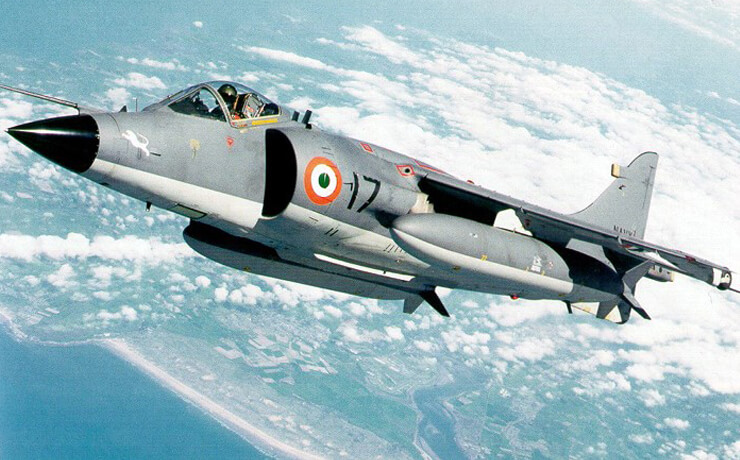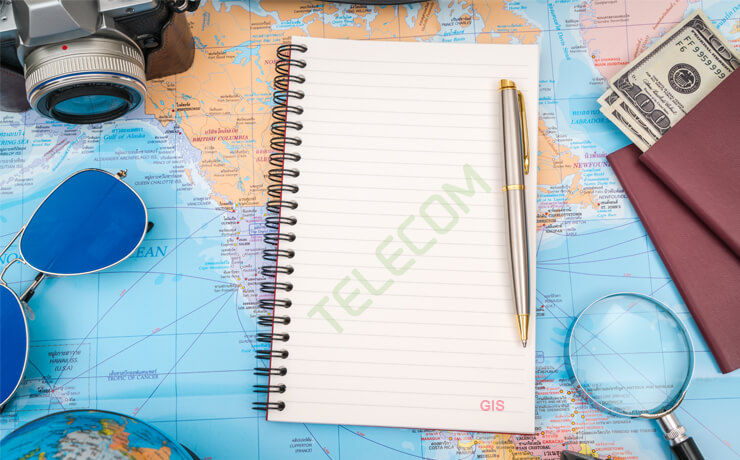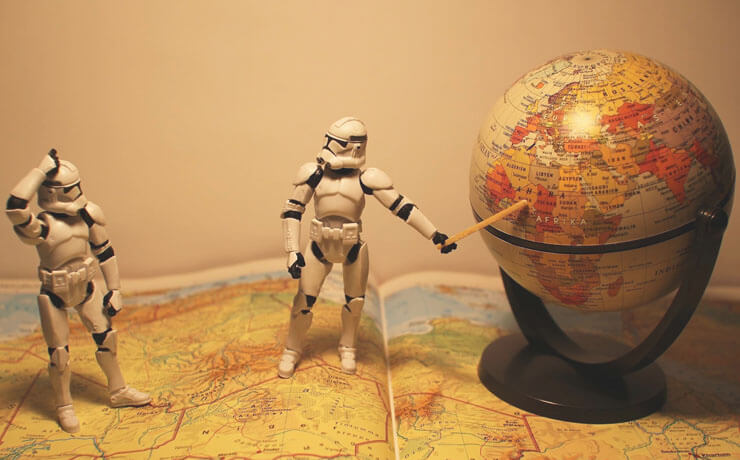It manipulates collected geographical data to give us map display through which we can retrieve the geographical information of various places. With the application of this technology, various tools are created to scrutinize spatial data, creating maps and displaying these data to the user.
When the geographical information is kept in spreadsheets with written coordinates user finds difficulties in using them. But after putting this information on a map it becomes extremely easier for any users to use these data.
Use of GIS is seen in a broad sector but it is used mainly in environment impact forecasting, plotting infectious disease spreading areas, highway planning, even the districting mapping. Numerous software is there using GIS technology like ArcGIS, superGis, SAGAGIS, JUMP GIS, QGIS, GRASS GIS. Esri Arc GIS is known as world’s best GIS software. Government and business organization uses this kind of software mainly to analyze spatial data. Like how much forest in located inside the city or state boundary or what is the number of endangered species in a particular area etc.
GIS is cost effective for handling geographical data. Keeping the geographical information in papers are very tedious and expensive to handle. But GIS software keeps the record of all these data as theme layers. And through this process, the expenses in record keeping of geographical information decreases.
Technicality behind GIS
The data which is to be stored is GIs are digital data. The hard copy of data can be transformed into digital information by computer aided design popularly known as Cad program. Geographical information is collected through satellite, heads- up digitalization and a real source.
If someone relates the forest area map of a particular region to its state map it will be easier to locate which part of the state is abundant with trees and which area is suffering from huge tree loses. The exact work is done by GIS by collecting data from different sources and combining them to create a huge geographical map. The first step for GIS is collecting source data. For that geocode system like Zipping or coordinates of latitude or longitude of different locations are required. Various kind of information can be entered into GIS in map form. Even if a normal form of data is fed into GIS it can convert it into recognizable form.
Through GIS one can see a real world entity in digitalization form and this representation is done in two ways. The real world objects are taken as two types by GIS. One is discrete objects and continues fields. There were mainly two types of methods to store data in GIS. They are raster images and vector. These data storing process use lines, points and polygons to represent the attributes of a location.
There are also several processes by which data can be entered into GIS. Information on papers which is known as PET film map can be digitalized to produce raster data which can be converted into vector data. Coordinate geometry or COGO can be used to enter direct survey data into GIS. The position of things from GNSS which is known as global navigation satellite system can also be collected and entered into GIS. In data collection remotely sensed data through sensors like cameras, the digital scanner, satellites etc. also have a significant effect. Recently miniature UAVs are used to collect aerial data. Photo interpretation of aerial photos has become a major source for data collection. After data collection and feeding data into GIS, these data needs editing. GIS also consist of a data reconstructing method through which one form of data can be converted into another type. As an example, a map data can be converted into a vector data.
GIS In India
India started using GIS in 1980. India launched its remote sensing satellite in this year with an allocation of GIS-based mapping. In 2000 the creation of National Spatial Data Infrastructure was started. GIs in India can be a medium of connecting the wide disparity of geographical locations and through which development of citizens can be done. National GIS has become an important domain for digital mapping of lands, economic growth, and social interactions. Now the Government of India Planning Commission’s Twelfth five-year plan 2012-2017 has included National GIS as a new initiative. India now has 5 GIS policy and they are National Map Policy, Remote Sensing Data Policy, Civil Aviation Requirement, Delhi Geographical Spatial Data Infrastructure and National Data and Accessibility Policy. These policies are important for National GIS its further advancement.
Present applications and Future of GIS
The present application of GIS includes Emergency management, cartography or mapmaking, forest management, homeland security, environmental security, medicine and health care, real estate development, transportation, social services, water resource management and urban planning and development etc. Google map is one of the applications of GIS. In the Mars Odyssey mission, the THEMIS camera and optics were used which took about 20, 000 images of Mars surface. From these, the map of the Martian landscape was built. It was through the use of GIS technology. In 2012 using GIS technology the topography of moon was explored by NASA. They also explored the property of rock by GIS.
Now a day due to the application of GIS it has become easy to find out a mobile or some other digital products in a locality. If aggressive development towards this sector will continue in future, we will able find out each and everything surrounded by us at any time at any place. One day it will be possible to find out each person’s availability in any location through GIS which will help in locating him.
In future, we may be able to track the history of geographical locations of any object by the use of GIS. In future using GIS, a real-time air traffic map can be made or real time of disease eruption can be calculated.



